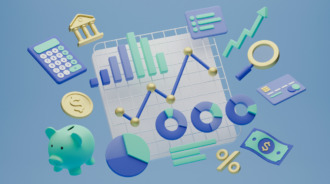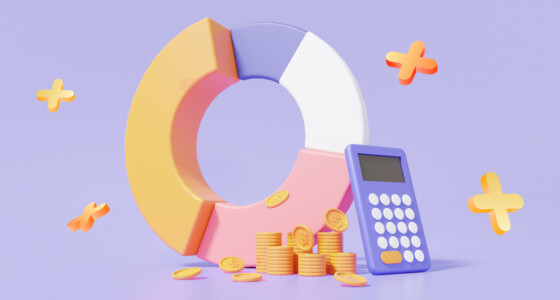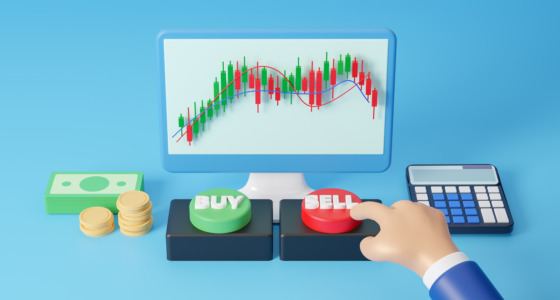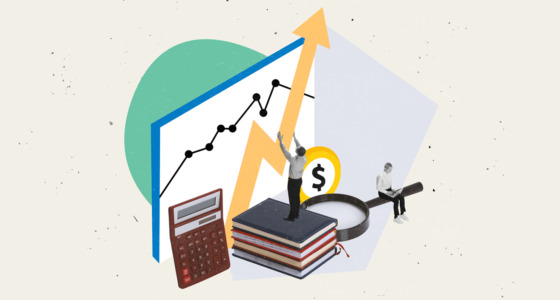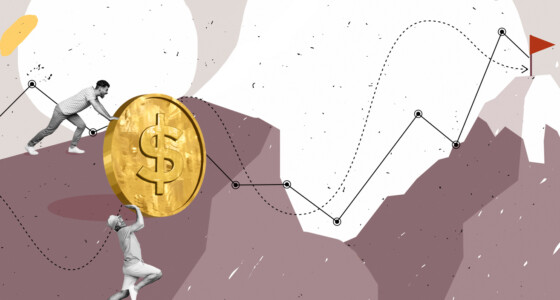

You’ve probably heard many stories about the times when risks paid off. Intel ditched its main focus on chips and got into the cloud and storage. Pandora asked 50 employees to defer their salaries for two years. TOMS introduced the “buy one, give one” concept.
That said, a few inspirational businesses that took a risk are just success stories. If you’re a trader, these shouldn’t justify or normalize disregarding risk or making poorly planned trades. In fact, even experienced, professional traders take safety precautions.
This article will explain how to do risk management in trading and share a few techniques that anyone can integrate into their trading plan.
1. Determine target levels upfront
You can’t control which trades will be winners or which ones will be losers. But what you can control is your risk-to-reward ratio. The thought process is straightforward: you assess whether reward potential outweighs the risk, and if it does, take on the trade.
Before you enter a trade, you need to establish where to get out. Decide what would be the adequate profit level for you and, even more importantly, what would be the acceptable amount of loss.
And then, you need to keep your promise and exist, whether you reach the profit target or the stop loss mark. Keeping your losing position open beyond your allowable risk threshold is not worth it.
2. Keep your risk/reward ratio consistent
After you decide what risk/reward ratio is right for you, maintain it across all your trading risk management strategies.
Increasing the position size when it’s getting returns is a common beginner mistake. Past performance doesn’t guarantee future results—a few winning trades are not a sign that the next one is going to be profitable, too. In fact, adjusting your risk/reward ratio mid-trade invites trouble.
Capital and risk management rules shouldn’t be changed without a solid reason. If you’re committed to a risk/reward ratio of 1:3, meaning you expect to risk $1 for the prospect of earning $3, stick to it.
3. Setting realistic expectations
This point ties in with the previous section—having adequate profit expectations.
There are many variables that will affect your risk management and trading goals, including:
- Your level of experience
- Your chosen instruments and markets
- Your trading account size
- Your risk tolerance
- Whether you’re trading full-time
- Whether you use leverage
If you’re just starting out, you should recognize that it might take time before you get the results you want. There is nothing wrong with wanting to set high expectations for yourself. But your personal goals shouldn’t dictate your trading decisions, at least not to the point that makes you overly confident and reckless.

4. Avoid break-even stops
There is nothing fundamentally wrong with moving your stops to break even. But time and time again, this move proves to be unprofitable and flat-out pointless.
The whole premise of a stop loss is based around exiting a trade in case the market moves against your setup. But a break-even stop does more to protect a trader’s ego than their capital. You’ll just end up losing funds on commissions. Moreover, you expose yourself to additional risk factors, slippage being one of them.
Remember: a realistic profit target doesn’t mean “no risk.”
5. Consider asset correlations
Assets that have a positive or negative correlation to each other can change your risk exposure. Pay special attention to positive correlations; you’ll have increased risks when trading instruments that are positively correlated. On another note, by trading instruments that are negatively correlated, you’ll get better diversification.
If you’re a stock trader, look at companies in the same industries and sectors. Stocks of companies located in the same region also tend to mimic each other’s price movements. If you’re a Forex trader, look at correlations across currency pairs. For example, EUR/USD tends to correlate to GBP/USD.
Bear in mind that correlations transcend asset classes—currencies are often tied to oil prices, stock markets are tied to gold, etc.
Summary
You might have heard of many techniques on how to manage risk in trading, perhaps even the ones listed above. But if you dismissed them as pure theory, it’s time to use them in practice!
Bear in mind that strategies that are focused on protecting your portfolio against loss don’t necessarily help you manage returns. They also are not meant to improve your returns on a per-trade basis. So, risk management should not be the only technique you use in trading.
